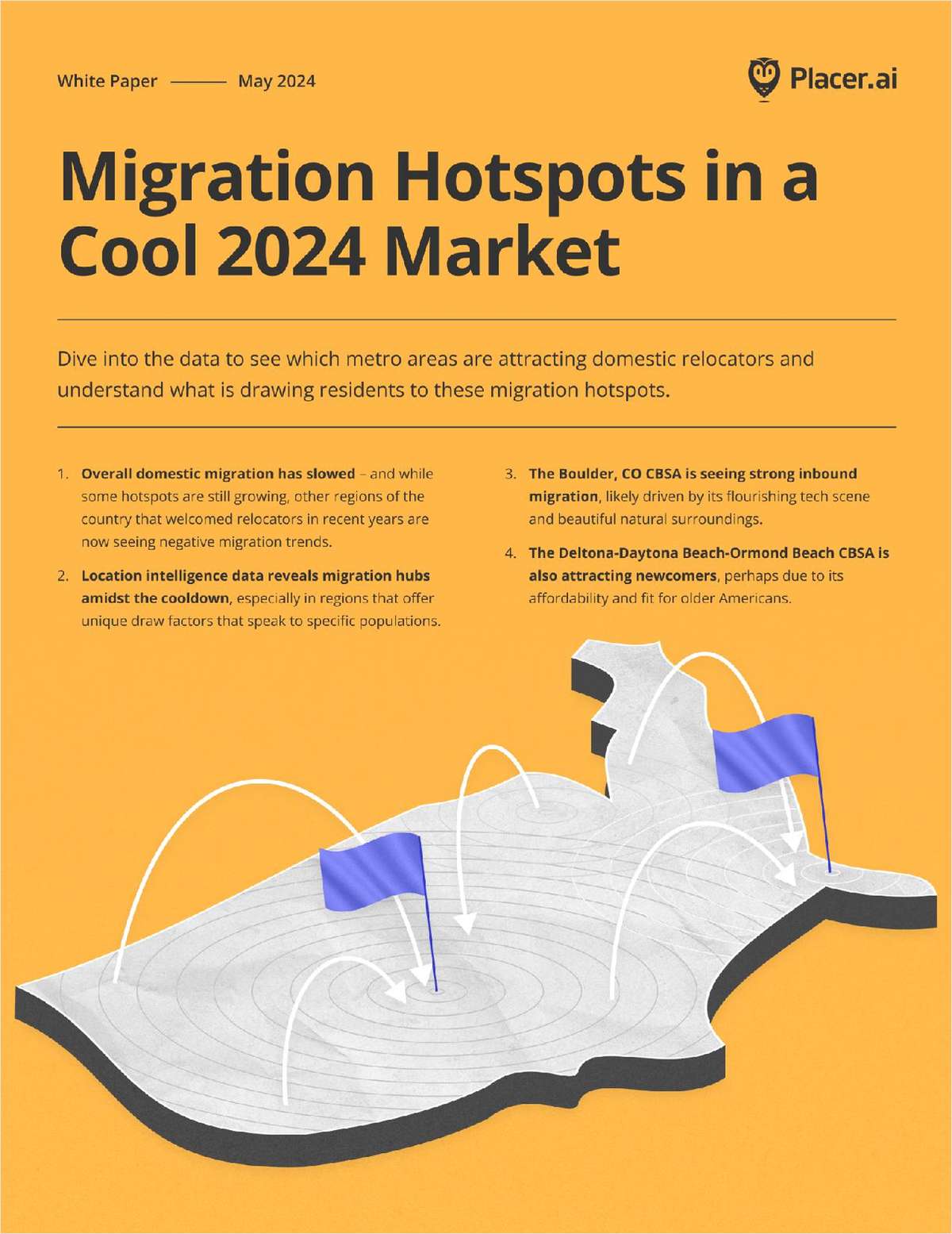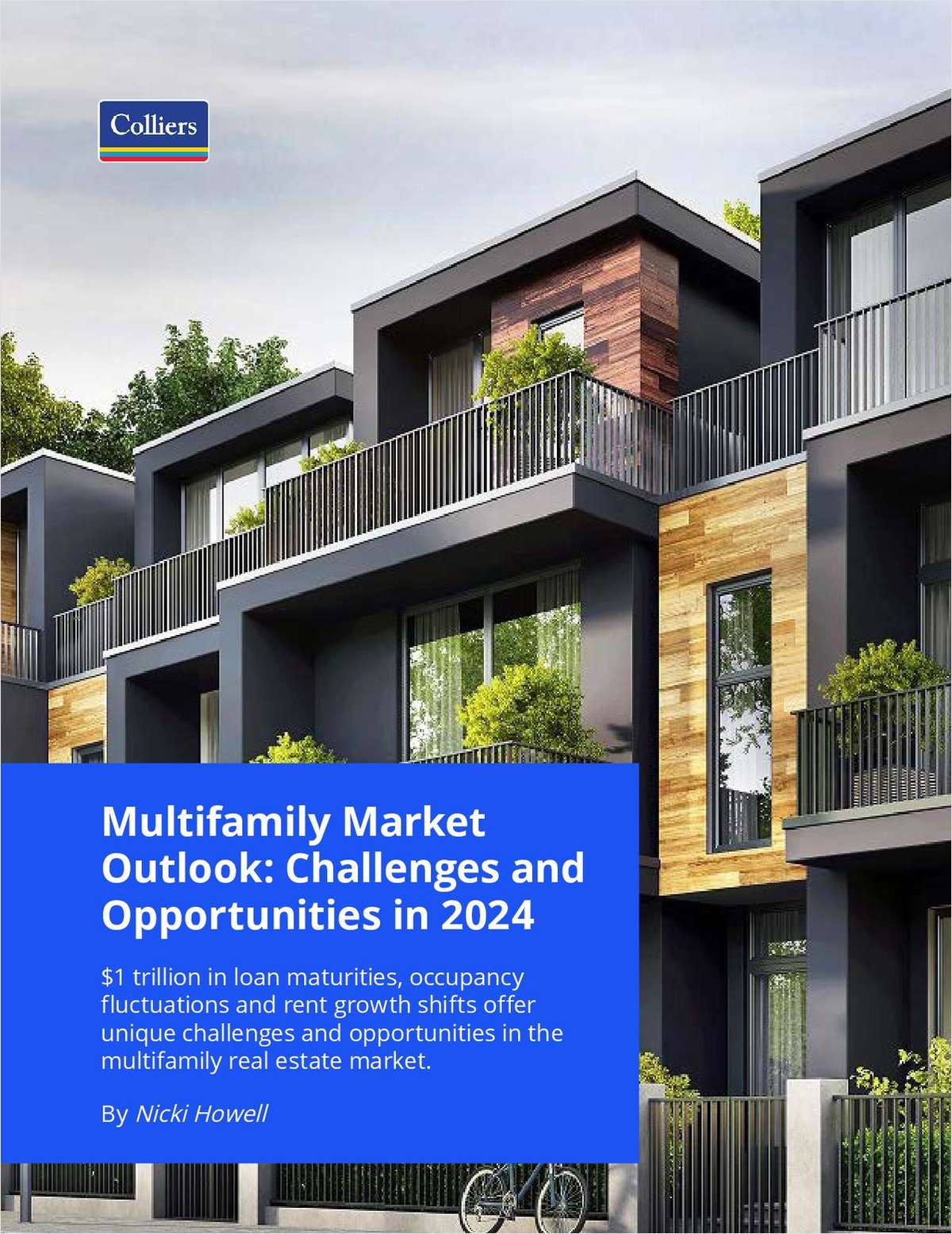
NOT FOR REPRINT
Page Printed from: globest.com/research/?page=173
Research
Resources

Placer.ai
From Placer.ai
Discover the latest insights on domestic migration trends in 2024 with this comprehensive white paper. Uncover the changing patterns and emerging hotspots shaping the CRE landscape today and what it means for you.
Download Resource
Cherre
From Cherre
This comprehensive eBook uncovers AI's best-kept-secret - clean, trusted, visible, and validated data. Download now to learn why real estate organizations need to build a solid data foundation to differentiate themselves and reap the rewards of AI.
Download Resource
Cherre
From Cherre
This comprehensive eBook uncovers AI's best-kept-secret - clean, trusted, visible, and validated data. Download now to learn why real estate organizations need to build a solid data foundation to differentiate themselves and reap the rewards of AI.
Download Resource
Placer.ai
From Placer.ai
This white paper dives into data to see how malls have been performing in 2024--and explores factors driving mall foot traffic during peak summer months.
Download Resource
JLL
From JLL
In today’s rapidly changing real estate landscape, staying ahead means understanding what’s next. Discover key strategies and emerging trends driving the future of corporate real estate.
Download Resource
LeaseAccelerator
From LeaseAccelerator
Explore the transformative power of centralizingCRE lease data and accounting functions. Access this on-demand webinar to discover cost-saving strategies, real-world case studies, and how to achieve compliance effortlessly.
Download Resource
LeaseAccelerator
From LeaseAccelerator
Discover how to optimize your real estate portfolio through ten actionable strategies that can help you achieve significant cost savings.
Download Resource
LeaseAccelerator
From LeaseAccelerator
Join this on-demand webinar to explore best practices in real estate lease administration. Learn how to streamline your operations and achieve cost savings while ensuring compliance with lease accounting standards.
Download Resource
LeaseAccelerator
From LeaseAccelerator
Transform your lease administration. Download this eBook to discover five essential tips that will help you streamline processes, reduce risks, and maximize efficiency.
Download Resource
LeaseAccelerator
From LeaseAccelerator
Transform your lease administration. Download this eBook to discover five essential tips that will help you streamline processes, reduce risks, and maximize efficiency.
Download Resource
Colliers
From Colliers
$1 trillion in loan maturities, occupancy fluctuations and rent growth shifts offer unique challenges and opportunities in the multifamily real estate market. Download this white paper to learn more.
Download Resource
Placer.ai
From Placer.ai
This snapshot examines the evolution of key industries and sectors impacting CRE across the United States in 2024.
Download Resource
Placer.ai
From Placer.ai
Discover the latest insights on domestic migration trends in 2024 with this comprehensive white paper. Uncover the changing patterns and emerging hotspots shaping the CRE landscape today and what it means for you.
Download Resource
Cherre
From Cherre
This comprehensive eBook uncovers AI's best-kept-secret - clean, trusted, visible, and validated data. Download now to learn why real estate organizations need to build a solid data foundation to differentiate themselves and reap the rewards of AI.
Download Resource
Cherre
From Cherre
This comprehensive eBook uncovers AI's best-kept-secret - clean, trusted, visible, and validated data. Download now to learn why real estate organizations need to build a solid data foundation to differentiate themselves and reap the rewards of AI.
Download Resource
Placer.ai
From Placer.ai
This white paper dives into data to see how malls have been performing in 2024--and explores factors driving mall foot traffic during peak summer months.
Download Resource
JLL
From JLL
In today’s rapidly changing real estate landscape, staying ahead means understanding what’s next. Discover key strategies and emerging trends driving the future of corporate real estate.
Download Resource
LeaseAccelerator
From LeaseAccelerator
Explore the transformative power of centralizingCRE lease data and accounting functions. Access this on-demand webinar to discover cost-saving strategies, real-world case studies, and how to achieve compliance effortlessly.
Download Resource
LeaseAccelerator
From LeaseAccelerator
Discover how to optimize your real estate portfolio through ten actionable strategies that can help you achieve significant cost savings.
Download Resource
LeaseAccelerator
From LeaseAccelerator
Join this on-demand webinar to explore best practices in real estate lease administration. Learn how to streamline your operations and achieve cost savings while ensuring compliance with lease accounting standards.
Download Resource
LeaseAccelerator
From LeaseAccelerator
Transform your lease administration. Download this eBook to discover five essential tips that will help you streamline processes, reduce risks, and maximize efficiency.
Download Resource
LeaseAccelerator
From LeaseAccelerator
Transform your lease administration. Download this eBook to discover five essential tips that will help you streamline processes, reduce risks, and maximize efficiency.
Download Resource
Colliers
From Colliers
$1 trillion in loan maturities, occupancy fluctuations and rent growth shifts offer unique challenges and opportunities in the multifamily real estate market. Download this white paper to learn more.
Download Resource
Placer.ai
From Placer.ai
This snapshot examines the evolution of key industries and sectors impacting CRE across the United States in 2024.
Download Resource
Placer.ai
From Placer.ai
Discover the latest insights on domestic migration trends in 2024 with this comprehensive white paper. Uncover the changing patterns and emerging hotspots shaping the CRE landscape today and what it means for you.
Download ResourceGlobeSt

Don't miss crucial news and insights you need to make informed commercial real estate decisions. Join GlobeSt.com now!
- Free unlimited access to GlobeSt.com's trusted and independent team of experts who provide commercial real estate owners, investors, developers, brokers and finance professionals with comprehensive coverage, analysis and best practices necessary to innovate and build business.
- Exclusive discounts on ALM and GlobeSt events.
- Access to other award-winning ALM websites including ThinkAdvisor.com and Law.com.
Already have an account? Sign In Now










